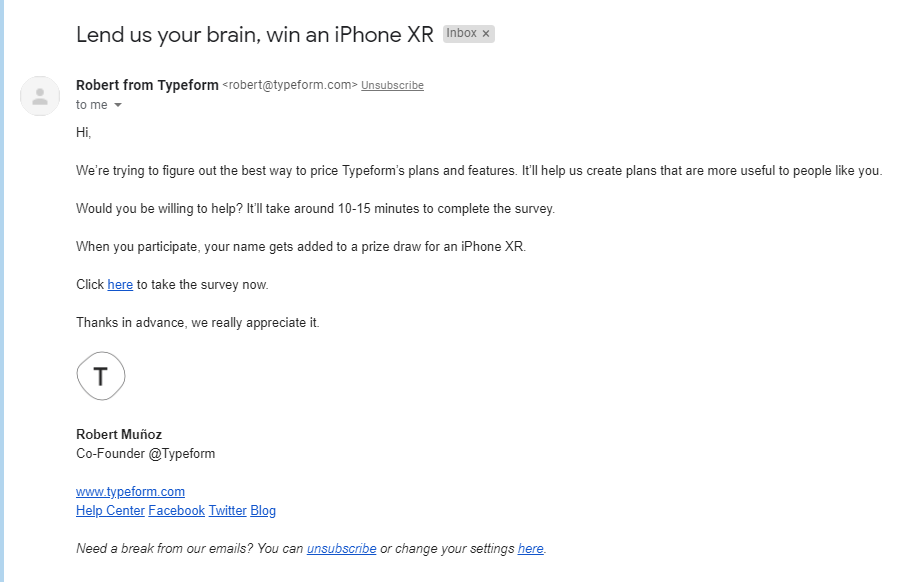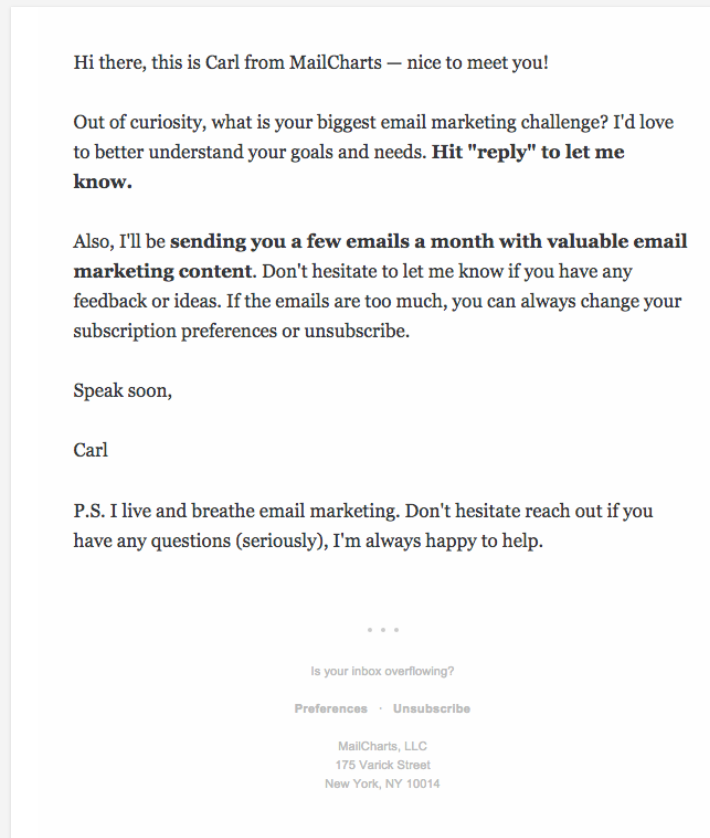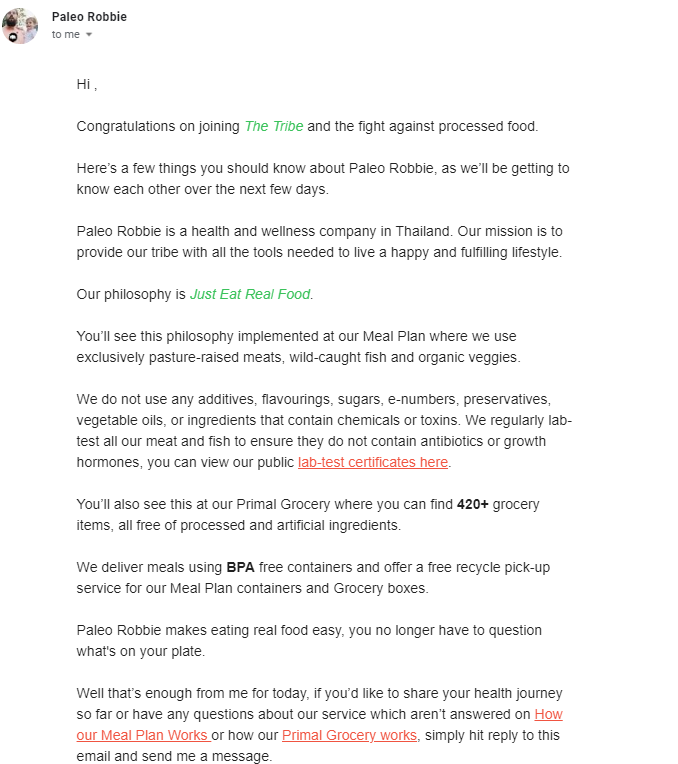Emails are an essential part of growing your own e-commerce store.
Most of you will have your own email templates that reflect your business and are optimized for up-selling, for abandon carts, and for showcasing new products.
But how many of you use plain text emails?
Plain text emails are a powerful tool for any e-commerce business, and in this article I’m going to show you how to use plain text emails for e-commerce.
When to use plain text emails
Plain text emails are traditional emails without images, code, or anything else that make them look like they were auto-generated.
This is what a plain text email looks like:

You may be looking at that email and thinking, “Why would I need them for my store? My current emails look WAY better.”
Plain text emails aren’t supposed to replace any of your behavior-trigged emails for selling; they are to improve personalization and should be used when you’re asking a customer to take an action that isn’t asking them to buy something.
Plain text emails often look like they were written by a real person, and from our own internal data they receive more replies than template emails.
Here are some real-life examples of plain text emails being used by businesses in their funnel:
Understand your customers’ needs
Knowing the pain points of your customers as well as their wants and needs helps you to develop your marketing message. One of the best ways to identify their pain points is to simply ask.
This email from Carl at MailCharts is trying to do just that:

It’s written in the first person. Carl has introduced himself as a human being and has even told the prospect to click ‘reply’ and respond to the email.
When you’re trying to collect information from your customers, plain text emails generate more replies than template-style emails do because users think they are talking to a real person.
Welcome emails
If you’re using a welcome email to introduce your business to the prospect, welcome emails written in the first person from the founder are much more powerful than stock templates tied up with offers.
Today, there are many tools available to create an online business. As a result, there are more businesses today than ever before.
What I’ve noticed over the years is that the more personal you are with your customers, the longer they’ll stay and be loyal to your business.
This is why I love to use plain text emails for welcome series, as it makes a bigger impact and warms the lead to make them more likely to become a customer quicker.
Here’s a welcome email from Paleo Robbie, where the founder uses a plain text format to introduce what they do and why they do it.

Try offers using plain text
Have you ever tried sending a plain text promotion?
It’s a tactic used typically by small businesses where the owner actually writes and sends the email, but it can work just as well for larger businesses.
Here’s one from Quad Lock for one of the biggest sale days of the year, Cyber Monday:
 It’s a pretty simple email with a voucher code and a call to action to their website.
It’s a pretty simple email with a voucher code and a call to action to their website.
You’ll be surprised at how many more opens you’ll receive for your offers using plain text, since they are less likely to hit the spam folder because of bulky code or images.
The next time you send out a newsletter, consider running an A/B split test between your standard email format and plain text format and measure the clicks and responses.
Plain text is better for personalization
Plain text emails are great for adding a personal personal touch to marketing.
Look at your email funnel and locate where your most personal emails are (welcome series, win backs, asking for a testimonial etc.) and consider testing them against a plain text email that is signed off by the founder or a relevant employee.
You don’t want to fall into the trap of all your emails looking and feeling the same, because over time your customers will stop paying attention.
Add a few personalized emails using plain text to balance your email marketing strategy if you haven’t already.